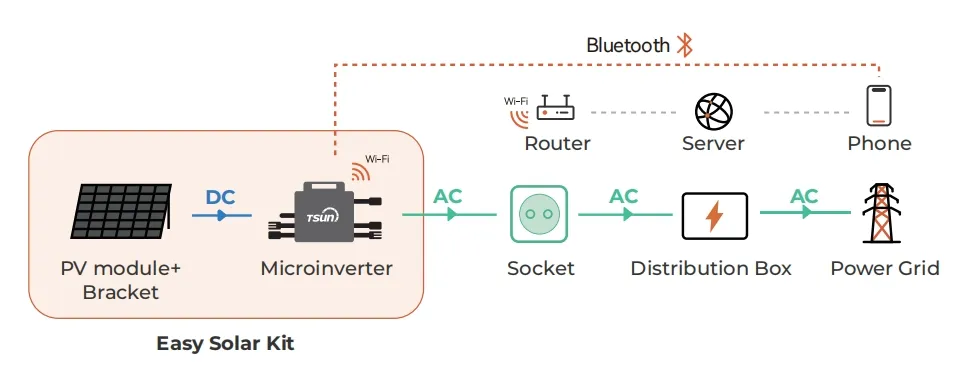Easy Solar Kit (with microinverter)
 LEARN DETAILS
LEARN DETAILS
Table of contents
The global solar energy market is projected to grow at a CAGR of 6.9% from 2023 to 2030, driven by advancements in photovoltaic technology and rising demand for renewable energy solutions (Grand View Research, 2023). Among these innovations, micro inverters have emerged as a critical component in modern solar power systems. Unlike traditional string inverters, micro inverters optimize energy harvesting at the panel level, ensuring higher efficiency and reliability.
Micro inverters convert direct current (DC) generated by individual solar panels into alternating current (AC) at the module level, enabling optimized energy conversion, system monitoring, and enhanced safety.

This article explores the mechanics, benefits, and applications of micro inverters in commercial and industrial solar installations. By analyzing their technical design, comparing them to traditional inverters, and highlighting real-world use cases, we aim to provide a comprehensive guide for businesses evaluating solar energy solutions.
Micro inverters are compact power electronic devices attached to individual solar panels to convert DC electricity into AC electricity directly at the source.
Traditional solar systems rely on a single string inverter to manage multiple panels. However, this approach creates inefficiencies when panels are shaded or mismatched. Micro inverters solve this problem by decentralizing the conversion process. Each panel operates independently, ensuring maximum energy output even under suboptimal conditions.
Key features of micro inverters include:
Understanding the components of a micro inverter system is essential to appreciating its operational efficiency. Let’s break down its architecture.
A micro inverter system consists of the inverter unit, communication modules, and monitoring software.
| Component | Function | Example Brands |
|---|---|---|
| Inverter Unit | DC-to-AC conversion | Enphase IQ8, APSystems |
| Communication Module | Data transmission | SolarEdge, Huawei |
| Monitoring Platform | Performance analytics | Enphase Enlighten |
To evaluate micro inverters effectively, businesses must compare them with traditional alternatives like string inverters.
Micro inverters outperform string inverters in shading tolerance, scalability, and safety but have higher upfront costs.
| Factor | Micro Inverters | String Inverters |
|---|---|---|
| Initial Cost | $0.30–$0.50 per watt | $0.10–$0.20 per watt |
| Maintenance Cost | Lower (no single point of failure) | Higher (centralized risk) |
Micro inverters operate at lower DC voltages (40–60V vs. 600–1,000V for string systems), reducing fire risks.
The operational benefits of micro inverters make them ideal for large-scale commercial deployments.
Micro inverters enhance energy yield, simplify maintenance, and improve ROI for businesses.
Selecting the right micro inverter requires evaluating technical specifications and vendor support.
The Easy Solar Kit, which integrates a PV module, microinverter, DIY bracket, and cables, is designed for a variety of applications and can be installed on a balcony, garden, flat roof, and even a wall. PV modules generate DC electricity under sunlight. Microinverters convert DC electricity into AC electricity and transmit it to the home power grid through sockets, Contact us to get your personal Quote.

